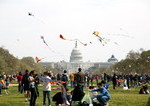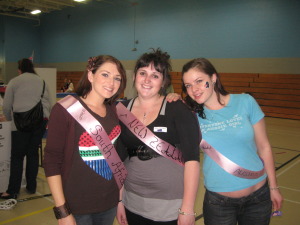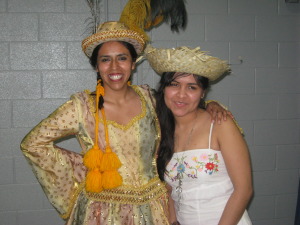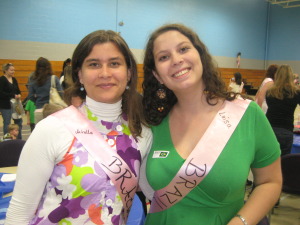Cinco de Mayo commemorates the May 5, 1862, Battle of Puebla (Batalla de Puebla) in which Mexican troops defeated Napoleon’s French forces. Cinco de Mayo is celebrated more in the United States than in Mexico. Look for the book Cinco de Mayo by Janet Riehecky or visit www.elbalero.gob.mx/index_kids.html for information and activities from Mexico.
Mexican food is a huge part of celebrating Cinco de Mayo. To celebrate this fun holiday and all the tasty meals that go with it, try making these adorable foam tacos and tostadas.
FOAM TACOS AND TOSTADAS:

What you’ll need:
- Tan craft foam, cut into a 3-4″ circle
- Brown, yellow, green and red craft foam, cut into strips
- White craft glue
- Hot glue gun
How to make it:
- To make the taco, glue brown foam strips to the circle. Be sure they are hanging over the edge so they will be sticking out when you fold the taco.
- Repeat Step 1 with each color until you’ve worked your way around the circle. Fold the circle in half as you go to make sure it looks right. Use green for lettuce, yellow for cheese, and red for tomato salsa.
- Fold the circle in half and hot glue in place to hold it closed.
- For the tostada, smear the circle with white craft glue. Cover with brown foam strips.
- Dot white glue on top of the brown strips and add a layer of yellow and orange foam strips for the look of cheese.
- Dot white glue on top of the “cheese” and add the “lettuce” by gluing on green strips.
- Lastly, cut a few red strips into squares and glue the “tomatoes” on top.
Tips:
- You can purchase craft foam in individual sheets in many colors, or you can purchase packages of various shapes, sizes and colors. Either option will work since they can easily be cut down to strips.
- You can add a magnet to the back of your taco and hang it on the fridge!
- Felt can be substituted for foam in this craft.
MARACAS:
Make your own shakable maracas to celebrate Cinco de Mayo! Use your imagination to create colorful and festive maracas to enjoy with your friends.
What you’ll need:
- 2 Styrofoam or paper cups
- Tan, red and white acrylic paint
- Decorative accents such as pom-poms and buttons
- Hot glue gun
- Dried beans
How to make it:
- Paint cups with tan paint and let dry.
- Decorate cups by painting on swirling or curvy lines. We used red paint for ours. You can also paint zig-zags. We used white for ours. Paint the bottom of each cup red.
- Place a handful of dried beans into one of the cups.
- Put a layer of hot glue onto the rim of the cup with the beans in it before quickly placing the other cup on top of it, lining up the rims of both cups. Allow to dry completely.
- Finish any decorating you would like, such as adding pom-poms around the center (to hide the glue line). We also used mini pom-poms to dot the peaks of the zig-zags.
- Once your glue is completely dry, shake your maraca!
Tips:
- Smaller children may enjoy using stickers instead of trying to manipulate pom-poms and buttons. Older kids may like to get even more intricate by painting on more detailed and thinner lines.
- If you don’t have any dried beans, use a few pennies instead.
- Our color suggestions are just that, suggestions. Use whatever colors you like to make this project your own!



 Earth Day
Earth Day Cooking with my kids is one of my favorite things to do! Every member of our family enjoys food and trying new recipe is not only fun but a good way to eat a variety of things.
Cooking with my kids is one of my favorite things to do! Every member of our family enjoys food and trying new recipe is not only fun but a good way to eat a variety of things.

 April Fools’ Day or All Fools’ Day is a day celebrated in various countries on April 1. People will play practical jokes on each other,so watch out and don’t be too gullible.
April Fools’ Day or All Fools’ Day is a day celebrated in various countries on April 1. People will play practical jokes on each other,so watch out and don’t be too gullible. Passover is a Jewish and Samaritan holy day and festival commemorating the biblical event of Hebrews’ escape from enslavement in Egypt. Passover is one of the most widely observed Jewish holidays and is commemorated as a time to contemplate the endurance of the Jewish people throughout history. Passover begins on the 15th day of the month of Nisan (equivalent to March and April in Gregorian calendar).
Passover is a Jewish and Samaritan holy day and festival commemorating the biblical event of Hebrews’ escape from enslavement in Egypt. Passover is one of the most widely observed Jewish holidays and is commemorated as a time to contemplate the endurance of the Jewish people throughout history. Passover begins on the 15th day of the month of Nisan (equivalent to March and April in Gregorian calendar). Good Friday, also called Holy Friday, Black Friday, or Great Friday, observed primarily by Christians commemorates the crucifixion of Jesus Christ. The holiday is observed during Holy Week on the Friday preceding Easter Sunday and often coincides with the Jewish observance of Passover.
Good Friday, also called Holy Friday, Black Friday, or Great Friday, observed primarily by Christians commemorates the crucifixion of Jesus Christ. The holiday is observed during Holy Week on the Friday preceding Easter Sunday and often coincides with the Jewish observance of Passover. The National Cherry Blossom Festival is an annual two-week event that celebrates springtime in Washington, DC as well as the 1912 gift of the cherry blossom trees and the enduring friendship between the people of the United States and Japan.
The National Cherry Blossom Festival is an annual two-week event that celebrates springtime in Washington, DC as well as the 1912 gift of the cherry blossom trees and the enduring friendship between the people of the United States and Japan.



